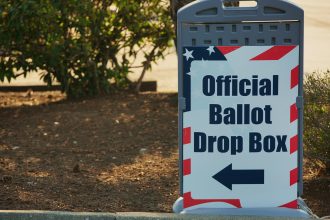FX Swaps: 5 Ways to Master Currency Cash Flow Today
In today’s interconnected global economy, businesses frequently navigate the complexities of international transactions. Managing multiple currencies often introduces significant challenges, particularly when it comes to predicting and controlling cash flow. This is where **FX swaps** emerge as an invaluable financial instrument, offering a sophisticated yet practical solution to align currency inflows and outflows and mitigate foreign exchange risk.
If you’ve ever grappled with the timing of international payments or receipts, or worried about unexpected currency fluctuations impacting your bottom line, understanding FX swaps is crucial. They provide a flexible mechanism to exchange currencies now and reverse the transaction later, giving you greater command over your financial liquidity and exposure.
What Exactly Are FX Swaps?
An FX swap is essentially a combination of two offsetting foreign exchange transactions: a spot transaction and a forward transaction. Both legs are agreed upon simultaneously with the same counterparty, but they have different value dates. This structure allows entities to temporarily exchange one currency for another and then swap them back at a predetermined future date and rate.
Unlike a simple spot transaction, which is a one-off exchange, or a forward contract, which locks in a single future exchange, FX swaps provide a temporary borrowing or lending of currency. They are driven by interest rate differentials between the two currencies and are typically used for short-to-medium term cash management needs.
- They involve an immediate (spot) exchange of currencies.
- They include a simultaneous agreement to reverse the exchange at a future (forward) date.
- Both legs of the transaction are executed with the same counterparty.
How Do FX Swaps Work to Optimize Currency Cash Flow?
The operational mechanics of FX swaps are straightforward, yet their impact on **currency cash flow management** can be profound. Imagine a company with excess euros today but needing US dollars for a short period, expecting to have excess dollars in the future when the euros are needed again. An FX swap fits this scenario perfectly.
- Initial Spot Leg: The company sells its excess euros for US dollars at the current spot rate. This provides immediate dollar liquidity.
- Forward Leg (Reverse): Simultaneously, the company agrees to sell the US dollars back for euros at a predetermined forward rate on a specified future date. This locks in the rate for the future reversal, eliminating uncertainty.
This two-pronged approach ensures that a business can access the currency it needs without fully exposing itself to future market volatility. It effectively bridges temporary currency mismatches on a company’s balance sheet, optimizing liquidity without incurring open foreign exchange risk.
Strategic Advantages of Implementing FX Swaps
The benefits of utilizing FX swaps extend beyond mere currency exchange. They are powerful tools for comprehensive **foreign exchange management** and financial strategy.
Mitigating Foreign Exchange Risk
One of the primary advantages of FX swaps is their ability to hedge against unfavorable currency movements. By locking in the future exchange rate for the reverse transaction, businesses effectively shield themselves from potential losses due to currency depreciation or appreciation. This predictability is vital for budget stability and financial planning.
Enhancing Liquidity Management
FX swaps allow companies to manage their short-term liquidity needs across different currencies. If a business has surplus funds in one currency but a deficit in another, an FX swap can convert the surplus into the needed currency temporarily, without closing out the original position. This is particularly useful for intercompany lending or managing working capital across international subsidiaries.
Streamlining Treasury Operations
For treasury departments, FX swaps offer an efficient way to manage currency exposures and cash positions. They reduce the administrative burden associated with managing multiple spot and forward contracts separately, as both legs of the swap are bundled into a single agreement. This simplifies reconciliation and oversight, improving overall **treasury operations**.
Common Use Cases for FX Swaps
Understanding when and how to deploy FX swaps can significantly enhance a company’s financial agility. Here are a couple of common scenarios where they prove invaluable.
Bridging Short-Term Funding Needs
A multinational corporation might have a temporary excess of cash in its Euro account but needs to fund a payroll or supplier payment in USD. Instead of converting the Euros permanently or taking out a costly short-term loan, an FX swap allows them to temporarily convert Euros to USD, using the Euros as collateral for the dollar “borrowing,” and then revert the transaction when the USD is no longer needed or the Euro funds are required again.
Managing Cross-Currency Investments
Investors holding assets denominated in a foreign currency may use FX swaps to manage their exposure without selling the underlying asset. For instance, an investor with a USD-denominated bond but needing to report in EUR could use an FX swap to convert their expected USD coupon payments to EUR, ensuring predictable returns regardless of future exchange rates.
FX Swaps vs. Other Foreign Exchange Instruments
While FX swaps are powerful, it’s important to differentiate them from other foreign exchange instruments to choose the right tool for the job.
- FX Forwards: A forward contract locks in an exchange rate for a single future date. It’s ideal for a one-time future payment or receipt. FX swaps, conversely, involve two transactions (spot and forward) and are designed for temporary currency exchanges.
- Spot Transactions: A spot transaction is an immediate exchange of currencies at the current market rate. While it’s the first leg of an FX swap, a standalone spot transaction does not provide the future certainty or temporary nature that a swap offers.
Each instrument serves a specific purpose, and understanding their nuances is key to effective **hedging strategies** and **currency risk mitigation**.
Best Practices for Effective FX Swaps Utilization
To maximize the benefits of FX swaps, consider these best practices.
Assessing Market Conditions
While FX swaps lock in rates, being aware of current interest rate differentials and market expectations can help in timing your swap transactions. Understanding the carry cost or benefit embedded in the forward points is crucial for informed decision-making. You can learn more about the intricate details of these financial instruments by consulting resources like Investopedia’s guide on FX Swaps.
Partnering with Trusted Financial Institutions
Selecting a reputable financial partner is paramount. A strong banking relationship ensures competitive pricing, efficient execution, and expert advice tailored to your specific **liquidity optimization** needs. They can provide insights into market trends and help structure swaps that align with your business objectives. Further insights into global financial markets can often be found through institutions like the Bank for International Settlements (BIS), which publishes research on foreign exchange dynamics.
FX swaps are more than just currency exchanges; they are sophisticated instruments for strategic financial management. By mastering their use, businesses can gain unparalleled control over their international cash flows, reduce exposure to currency volatility, and enhance their overall financial stability.
Ready to optimize your cash flow? Consult with a financial expert today to explore tailored FX swap solutions for your business.
Featured image provided by Pexels — photo by Photo By: Kaboompics.com






